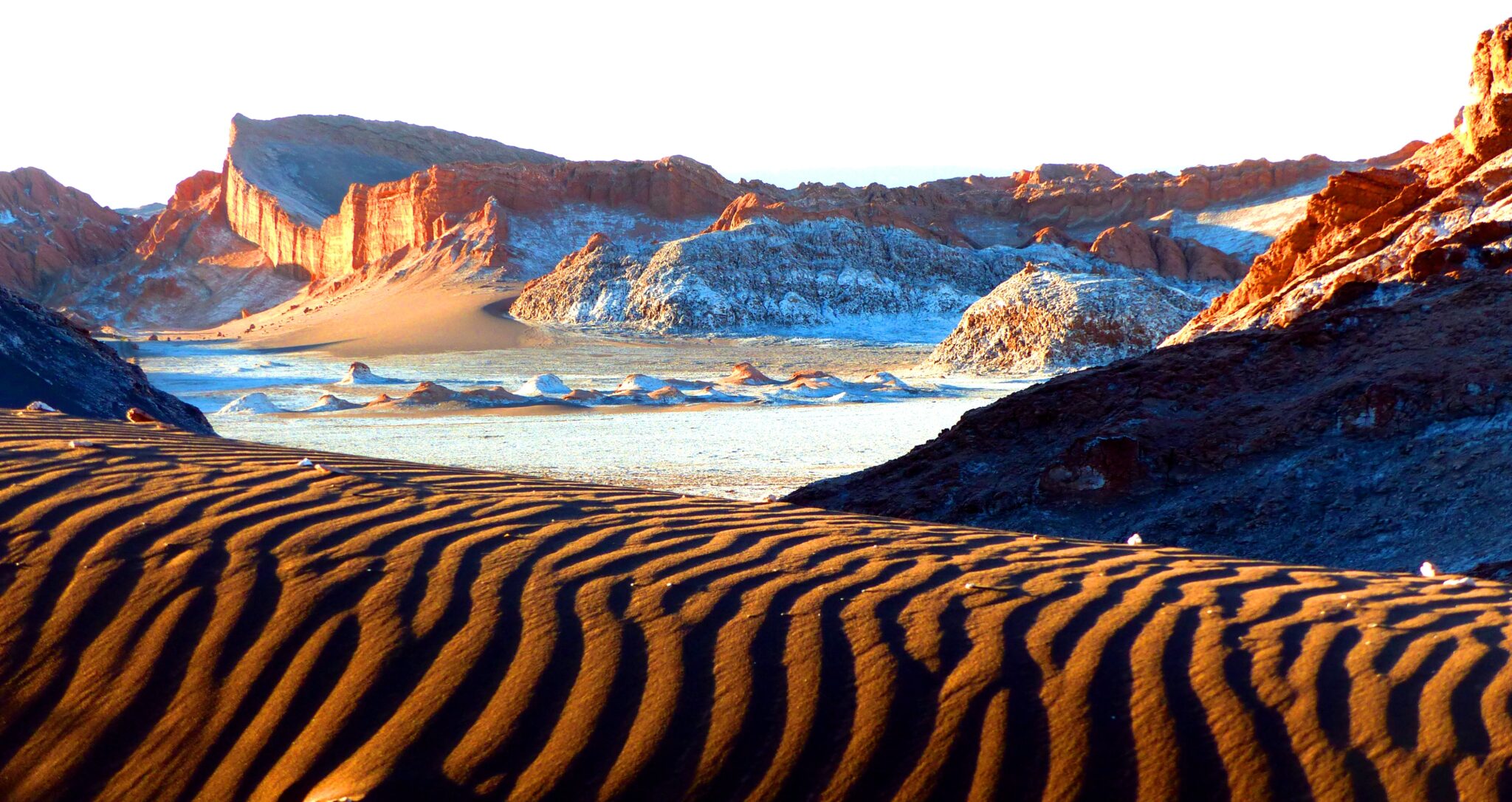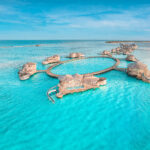There are places on Earth so surreal, so silent, and so beautiful that it feels as though you’ve stepped onto another planet upon arrival. Chile’s Atacama Desert is one of them.
Stretching over 600 miles along South America’s Pacific coast, the Atacama is the driest non-polar desert in the world—a place where rainfall is so rare that some weather stations have never recorded a single drop. But don’t let its dryness fool you – this is a desert teeming with life, mystery, and incredible natural beauty.
From salt flats that mirror the sky to lunar valleys carved by wind and time, the Atacama defies expectations. Every turn reveals a new surprise. Ancient petroglyphs, towering cactus forests, and perfectly still high-altitude lagoons like Laguna Miscanti and Miñiques are all set against cobalt skies and snow-dusted peaks.
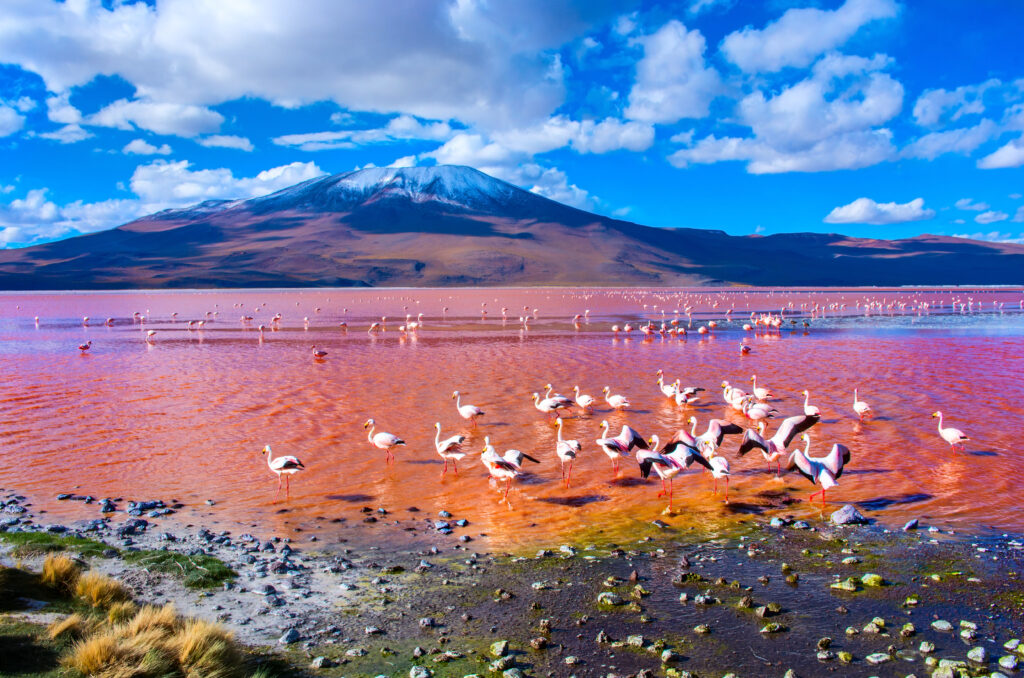
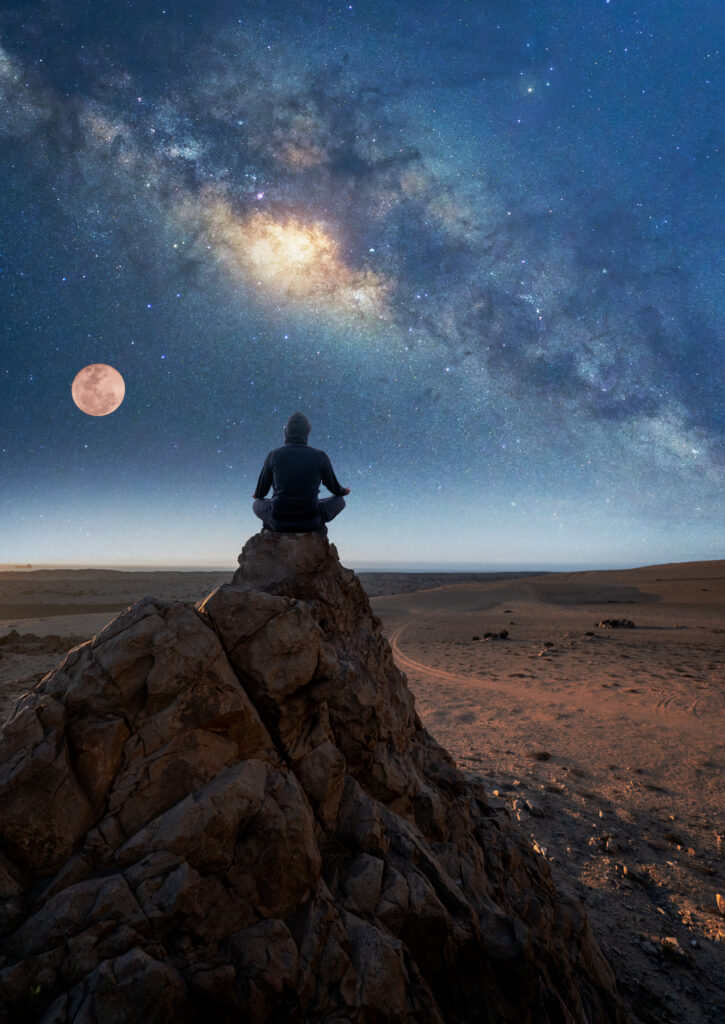
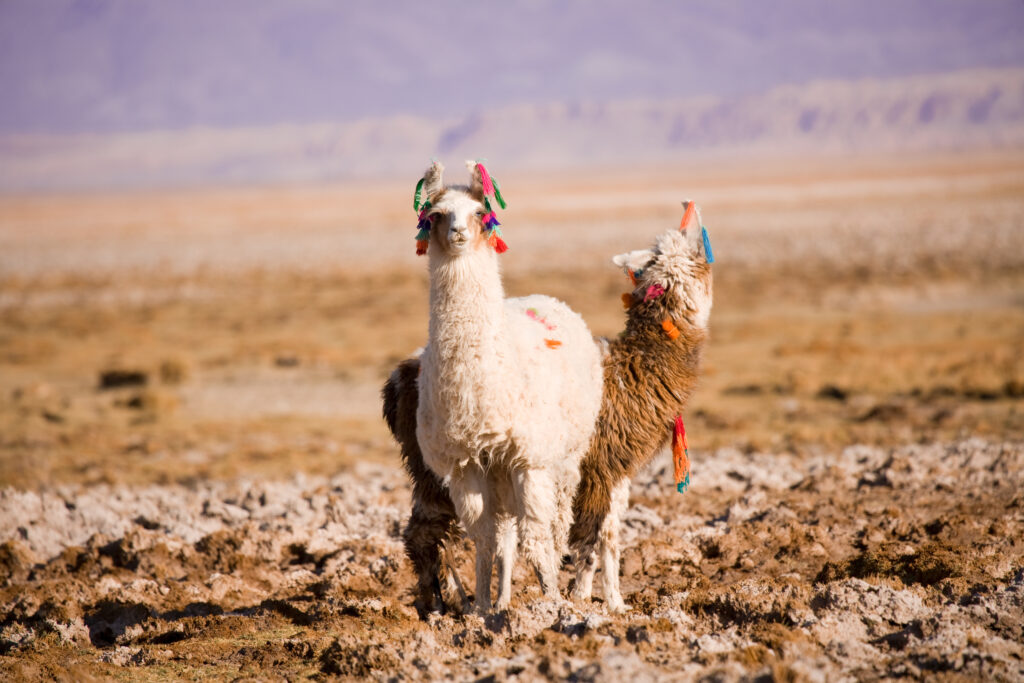
San Pedro de Atacama – The Desert’s Soul
At the heart of it all lies San Pedro de Atacama. Equal parts frontier outpost and cultural crossroads, it’s the gateway to most desert excursions. Here, travelers from around the world gather and prepare for days of exploration.
Despite its remote feel, San Pedro offers cozy guesthouses, local artisan markets, and restaurants serving Andean-infused Chilean cuisine. It’s the perfect base for discovering the desert’s extremes. It’s also the perfect place to launch your desert experiences. And there are several great ones to choose from.
Valle de la Luna (Valley of the Moon)
Roughly eight miles from San Pedro sits the Valle de la Luna. Here, wind-eroded rock formations, dunes, and salt-covered grounds make it one of the most iconic spots in the Atacama. Tours usually take place in the late afternoon, ending with a sunset that turns the desert pink, orange and gold.
El Tatio Geysers
To reach the geysers, it’s early to bed, early to rise. Located 56 miles from San Pedro, tours leave before dawn to catch their eruptions in the cold morning air when their steam columns are illuminated by the rising sun. If you choose to take this tour, make sure to bundle up. The site’s altitude is 14,100 feet, so it’s cold.
Altiplanic Lagoons: Miscanti & Miñiques
The twin jewels called the Altiplanic Lagoons are surrounded by snow-dusted volcanoes and vast golden plains. Found about 62 miles from San Pedro, the deep blue waters of the lagoons contrast dramatically with their surrounding arid terrain, creating a landscape that feels almost unreal. Flamingos, vicuñas, and Andean foxes roam nearby, while the reflection of the mountains shimmer on the surface of the still waters.
Rainbow Valley (Valle del Arcoiris)
Rainbow Valley (Valle del Arcoíris) lives up to its name with hills and rock formations painted in vibrant shades of red, green, yellow, and white. The colors, caused by rich mineral deposits and centuries of erosion, create a surreal, almost Martian landscape. Located 56 miles from San Pedro, it is one of the region’s hidden gems. Less crowded than the more famous sites but equally impressive. The area offers quiet hiking trails and stunning photo opportunities, especially in the early morning or late afternoon light.
A Sky Unlike Any Other
By night, the Atacama becomes a window to the cosmos. With high altitude, dry air, and almost no light pollution, it’s one of the best places on Earth for stargazing. The Milky Way appears in stunning clarity, stretching across the sky like a cosmic river.
Most tours are led by knowledgeable astronomers who provide insight into the night sky, explaining the constellations, the southern hemisphere’s stars, and even the history of the region’s celestial significance. Some tours also visit local observatories, where you can learn about the research conducted in this remote desert region.
For those with an adventurous spirit, the experience of lying on the salt flats, gazing up at the stars with nothing but the vast desert around you, is simply unforgettable.
Traveling through the Atacama Desert is not just a journey through one of the planet’s harshest environments, it’s an experience in contrast. Blinding salt and brilliant skies. Parched earth and glacial lakes. Silence so deep it hums. Here, it isn’t about visiting a destination – it’s about stepping into a world that challenges your senses and stays with you long after the dust settles.

